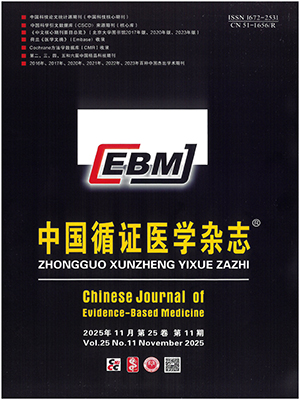| 1. |
Duan G, Yao M, Ma Y, et al. Perinatal and background risk factors for childhood autism in central China. Psychiatry Res, 2014, 220(1-2): 410-417.
|
| 2. |
戴瓊, 徐海青, 汪鴻, 等. 2000-2016 年我國兒童孤獨癥流行病學研究論文的文獻計量分析. 中國兒童保健雜志, 2017, 25(3): 271-274.
|
| 3. |
殷道根, 何珍, 李敏, 等. 母乳喂養與兒童孤獨癥關系的 Meta 分析. 中國兒童保健雜志, 2018, 26(7): 754-757.
|
| 4. |
毛萌, 楊慧明. 兒童保健臨床研究進展. 中國實用兒科雜志, 2011, 26(6): 344-347.
|
| 5. |
Qin YY, Jian B, Wu C, et al. A comparison of blood metal levels in autism spectrum disorder and unaffected children in Shenzhen of China and factors involved in bioaccumulation of metals. Environ Sci Pollut Res Int, 2018, 25(18): 17950-17956.
|
| 6. |
Li H, Li H, Li Y, et al. Blood mercury, arsenic, cadmium, and lead in children with autism spectrum disorder. Biol Trace Elem Res, 2018, 181(1): 31-37.
|
| 7. |
Saghazadeh A, Rezaei N. Systematic review and meta-analysis links autism and toxic metals and highlights the impact of country development status: Higher blood and erythrocyte levels for mercury and lead, and higher hair antimony, cadmium, lead, and mercury. Prog Neuropsychopharmacol Biol Psychiatry, 2017, 79(Pt B): 340-368.
|
| 8. |
Hessabi M, Rahbar MH, Dobrescu I, et al. Concentrations of lead, mercury, arsenic, cadmium, manganese, and aluminum in blood of romanian children suspected of having autism spectrum disorder. Int J Environ Res Public Health, 2019, 16(13): E2303.
|
| 9. |
Rahbar MH, Samms-Vaughan M, Dickerson AS, et al. Role of fruits, grains, and seafood consumption in blood cadmium concentrations of Jamaican children with and without autism spectrum disorder. Res Autism Spectr Disord, 2014, 8(9): 1134-1145.
|
| 10. |
Mohammad R, Maureen S V, Aisha D, et al. Concentration of lead, mercury, cadmium, aluminum, arsenic and manganese in umbilical cord blood of Jamaican newborns. Int J Environ Res Public Health, 2015, 12(19): 4481-4501.
|
| 11. |
楊克虎, 田金徽, 李倫. 網狀 Meta 分析方法與實踐. 北京: 中國醫藥科技出版社, 2018.
|
| 12. |
Stang A. Critical evaluation of the Newcastle-Ottawa scale for the assessment of the quality of nonrandomized studies in meta-analyses. Eur J Epidemiol, 2010, 25(9): 603-605.
|
| 13. |
Yorbik O, I Kurt A, Hasimi A, et al. Chromium, cadmium, and lead levels in urine of children with autism and typically developing controls. Biol Trace Elem Res, 2010, 135(13): 10-15.
|
| 14. |
Adams JB, Audhya T, Mcdonough-Means S, et al. Toxicological status of children with autism vs. neurotypical children and the association with autism severity. Biol Trace Elem Res, 2013, 151(2): 171-180.
|
| 15. |
Kern JK, Grannemann BD, Trivedi MH, et al. Sulfhydryl-reactive metals in autism. J Toxicol Environ Health A, 2007, 70(8): 715-721.
|
| 16. |
Vergani L, Lanza C, Rivaro P, et al. Metals, metallothioneins and oxidative stress in blood of autistic children. Research in Autism Spectrum Disorders, 2011, 5(1): 286-293.
|
| 17. |
De Palma G, Catalani S, Franco A, et al. Lack of correlation between metallic elements analyzed in hair by ICP-MS and autism. J Autism Dev Disord, 2012, 42(3): 342-353.
|
| 18. |
Geier DA, Kern JK, King PG, et al. Hair toxic metal concentrations and autism spectrum disorder severity in young children. Int J Environ Res Public Health, 2012, 9(12): 4486-4497.
|
| 19. |
俞慧強, 鄭輝烈, 李悅, 等. Meta 分析發表偏倚診斷方法研究. 中國衛生統計, 2011, 28(4): 402-405.
|
| 20. |
劉賢, 林穗方, 陳文雄, 等. 中國兒童孤獨癥譜系障礙患病率 Meta 分析. 中國兒童保健雜志, 2018, 26(4): 402-406, 429.
|
| 21. |
Kogan MD, Strickland BB, Blumberg SJ, et al. A national profile of the health care experiences and family impact of autism spectrum disorder among children in the United States, 2005-2006. Pediatrics, 2008, 122(6): e1149-e1158.
|
| 22. |
Montes G, Halterman JS. Child care problems and employment among families with preschool-aged children with autism in the United States. Pediatrics, 2008, 122(1): e202-e208.
|
| 23. |
Seguí JD, Ortiz-Tallo M, Diego YD. Stress related factors in caregivers of children with autism: Over-load, psychopathology and health. Anales de Psicología, 2008, 24(1): 100-105.
|
| 24. |
Mugno D, Ruta L, D'Arrigo VG, et al. Impairment of quality of life in parents of children and adolescents with pervasive developmental disorder. Health Qual Life Outcomes, 2007, 5(22): 234-236.
|
| 25. |
Stuart M, Mcgrew JH. Care giver burden after receiving a diagnosis of an autism spectrum disorder. Res Aut Spect Dis, 2009, 3(1): 86-97.
|
| 26. |
楊昱, 王曼. 學齡前孤獨癥兒童家庭的職業和經濟負擔調查. 中國臨床心理學雜志, 2014, 22(2): 295-297, 361.
|
| 27. |
袁燕. 鎘對大鼠大腦皮質神經細胞毒性損傷的機制. 畜牧與獸醫, 2016, 48(11): 91-94.
|
| 28. |
陳龍, 周娟, 高偉, 等. 鎬負荷大鼠一氧化氮和腫瘤壞死因子-α 釋放在介導多器官機能活動障礙中的作用. 生理學報, 2003, 55(5): 535-540.
|
| 29. |
Zawia NH, Lahiri DK, Cardozo-Pelaez F. Epigenetics, oxidative stress, and Alzheimer disease. Free Radic Biol Med, 2017, 46(9): 1241-1249.
|
| 30. |
張斯蒙, 田沛茹, 辛芳冉. 鎘暴露與高血壓發病風險相關性的 Meta 分析. 中國循證醫學雜志, 2018, 18(10): 1062-1069.
|
| 31. |
黃慧, 李國慧, 李貴霞, 等. 健康兒童血清中鈣, 鎂, 鐵, 鋅, 銅, 鉛, 鎘 7 種元素檢測結果研究. 中國實驗診斷學, 2019, 23(3): 503-505.
|
| 32. |
Jarup L. Hazards of heavy metal contamination. Br Med Bull, 2003, 68: 167-182.
|
| 33. |
Jarup L, Akesson A. Current status of cadmium as an environmental health problem. Toxicol Appl Pharmacol, 2009, 238(3): 201-208.
|
| 34. |
Berglund M, Akesson A, Nermell B, et al. Intestinal absorption of dietary cadmium in women depends on body iron stores and fiber intake. Environ Health Perspect, 1994, 102(12): 1058-1066.
|
| 35. |
Zhang ZW, Moon CS, Watanabe T, et al. Background exposure of urban populations to lead and cadmium: comparison between China and Japan. Int Arch Occup Environ Health, 1997, 69(4): 273-281.
|
| 36. |
Ikeda M, Zhang ZW, Shimbo S, et al. Urban population exposure to lead and cadmium in east and south-east Asia. Sci Total Environ, 2000, 249(1-3): 373-384.
|




